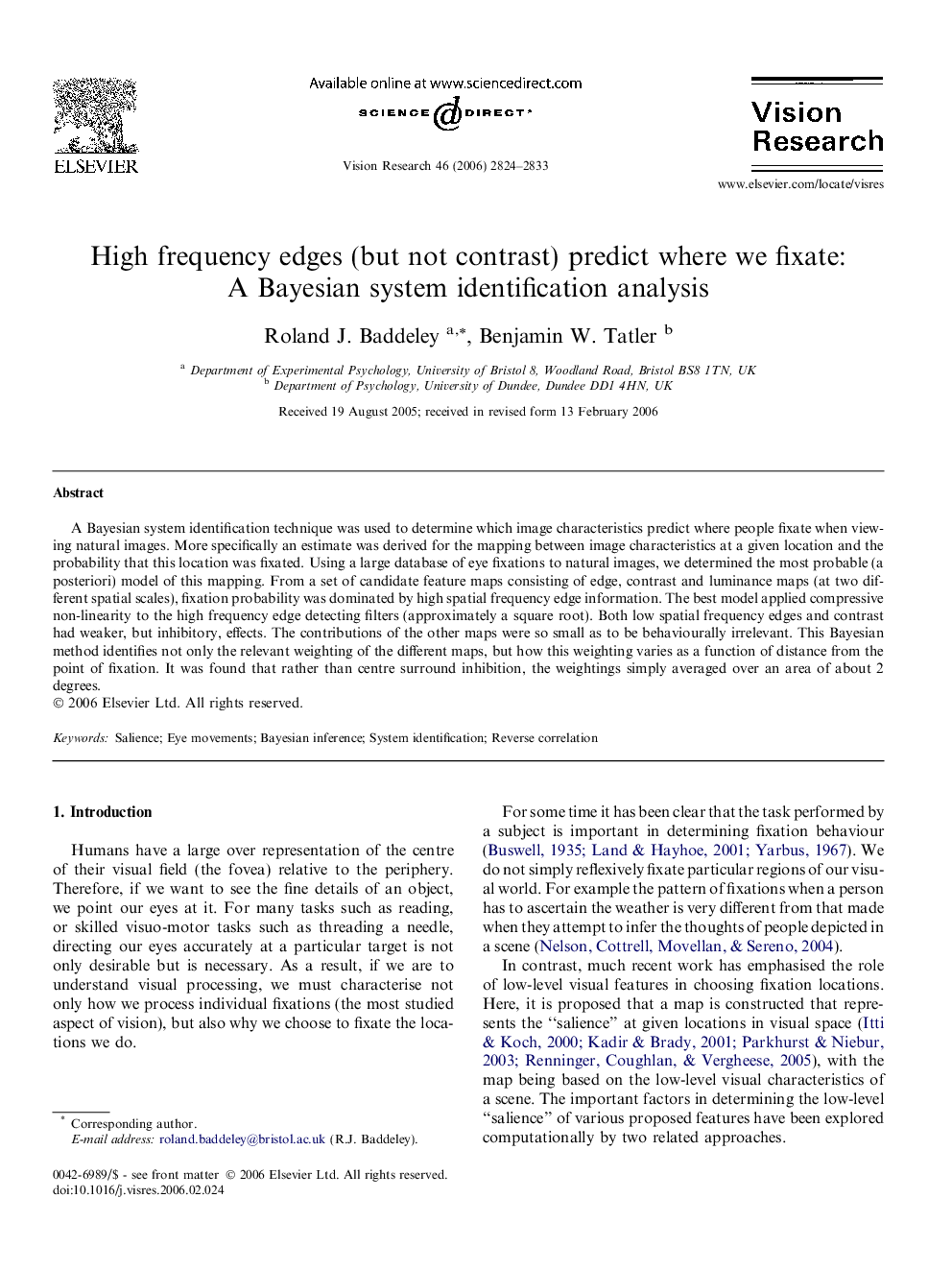| کد مقاله | کد نشریه | سال انتشار | مقاله انگلیسی | نسخه تمام متن |
|---|---|---|---|---|
| 4036615 | 1263621 | 2006 | 10 صفحه PDF | دانلود رایگان |

A Bayesian system identification technique was used to determine which image characteristics predict where people fixate when viewing natural images. More specifically an estimate was derived for the mapping between image characteristics at a given location and the probability that this location was fixated. Using a large database of eye fixations to natural images, we determined the most probable (a posteriori) model of this mapping. From a set of candidate feature maps consisting of edge, contrast and luminance maps (at two different spatial scales), fixation probability was dominated by high spatial frequency edge information. The best model applied compressive non-linearity to the high frequency edge detecting filters (approximately a square root). Both low spatial frequency edges and contrast had weaker, but inhibitory, effects. The contributions of the other maps were so small as to be behaviourally irrelevant. This Bayesian method identifies not only the relevant weighting of the different maps, but how this weighting varies as a function of distance from the point of fixation. It was found that rather than centre surround inhibition, the weightings simply averaged over an area of about 2 degrees.
Journal: Vision Research - Volume 46, Issue 18, September 2006, Pages 2824–2833